Unit Synopsis
By the end of the Talk For Reading (T4R) unit of Let’s Build a Boat children may be able to:
- Recognise that creating things can be fun, and that teamwork helps make it possible.
- Identify similarities and differences between boats featured in different texts.
- Justify opinions by making personal connections and referring to the text.
- Understand the process of making: planning, choosing materials and tools, following steps, and evaluating or adjusting as needed.
- Justify their boat or raft design by explaining its features and linking them to ideas or examples from the text.
Reading Skill Focus
- Responding to literature
- Interacting with others
- Predicting
- Retrieving facts
- Connecting (text-to-self and text-to-text)
- Inferring
- Summarising
- Evaluating
Reading Strategies
- Discussion
- Dialogic reading
- Read along
- Echoing
- Book review
Supporting Texts
Other skills
- Procedure writing
- Processes and production skills (Design & Technologies)


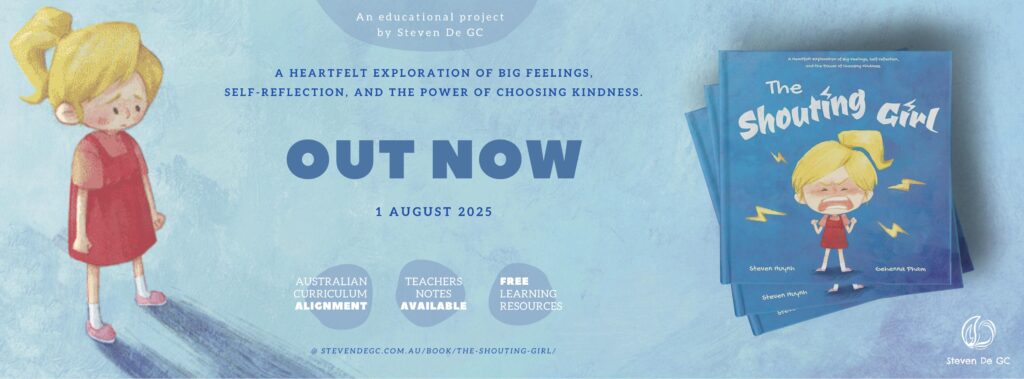
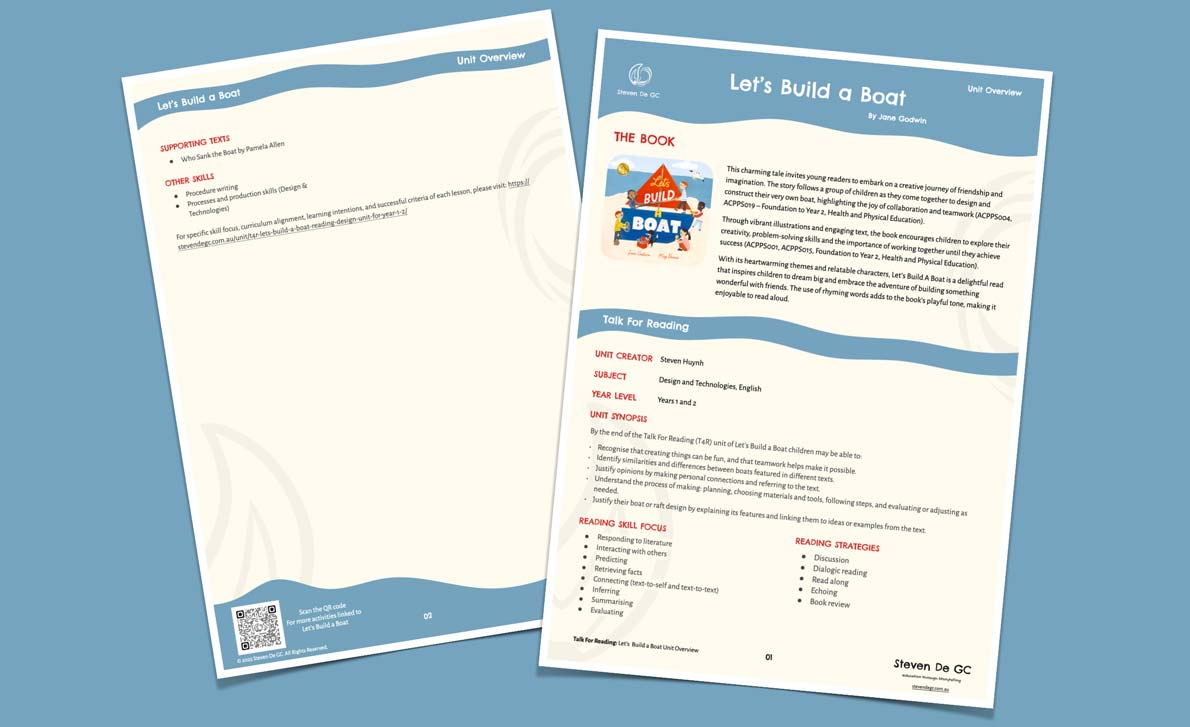
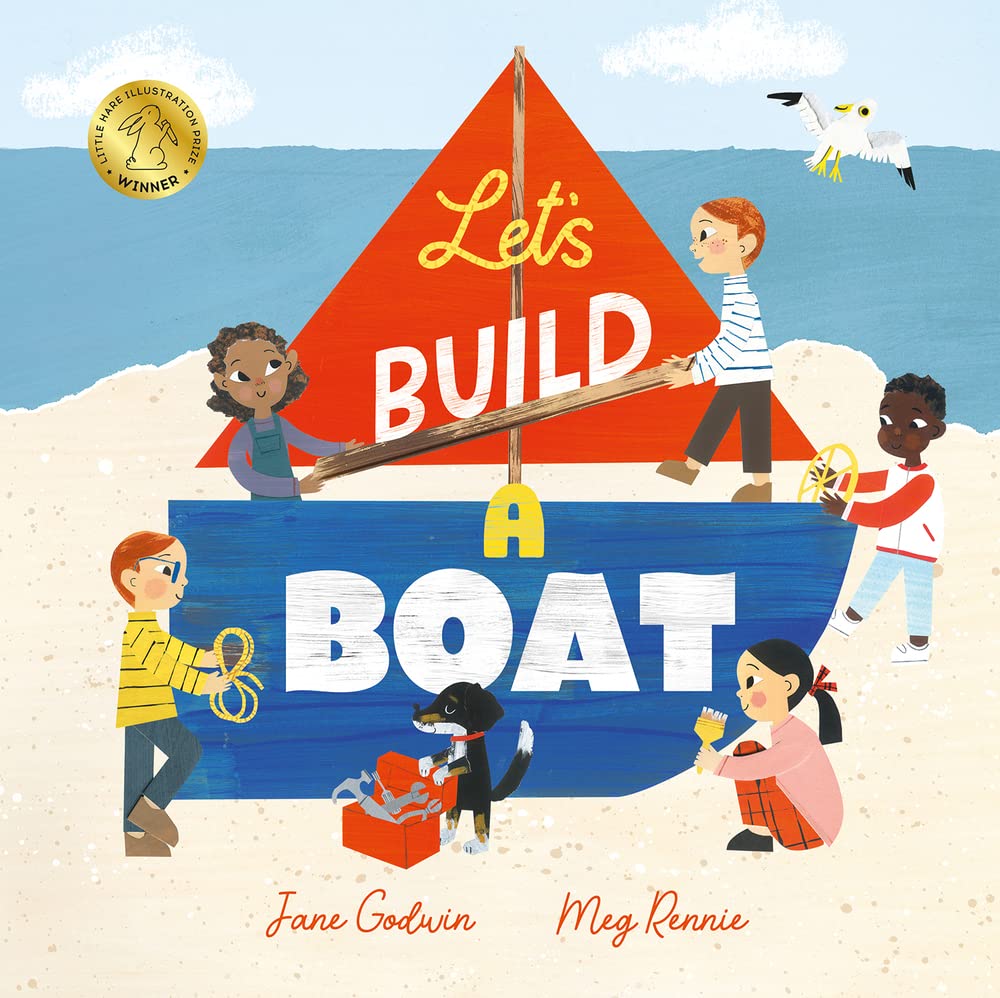
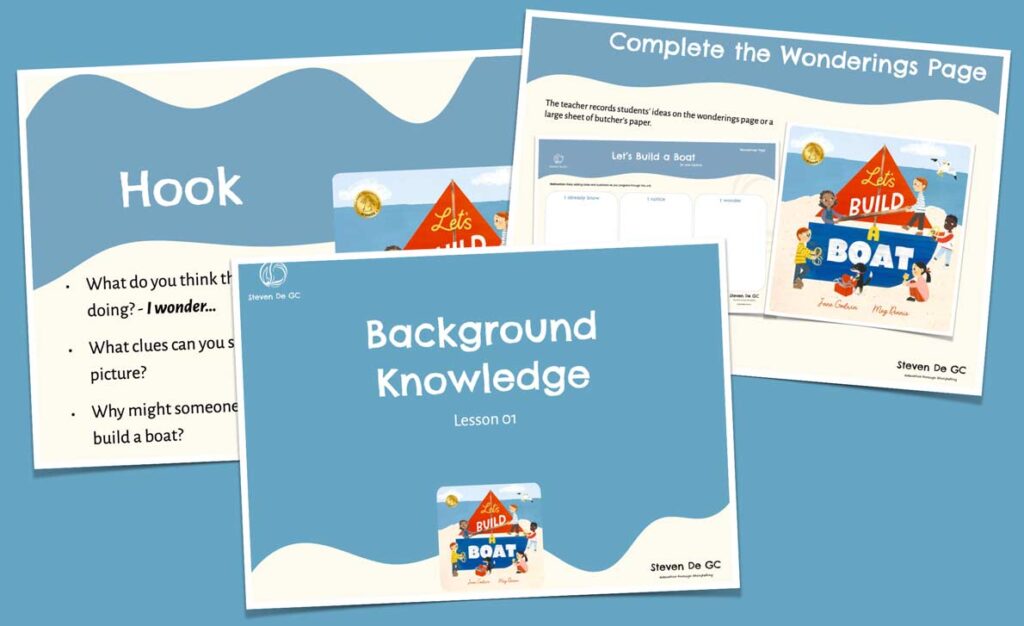
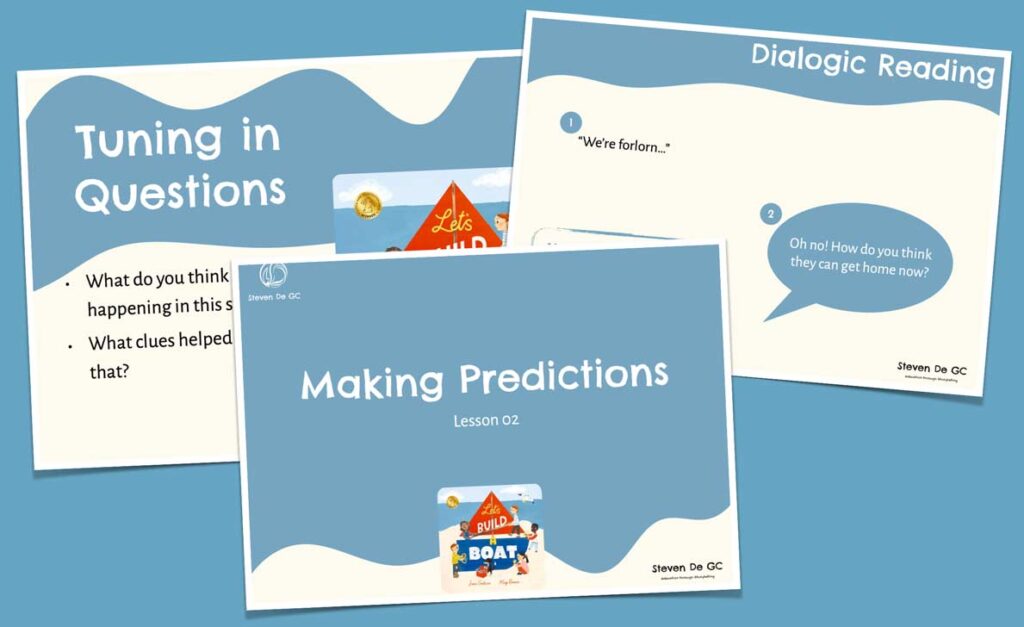
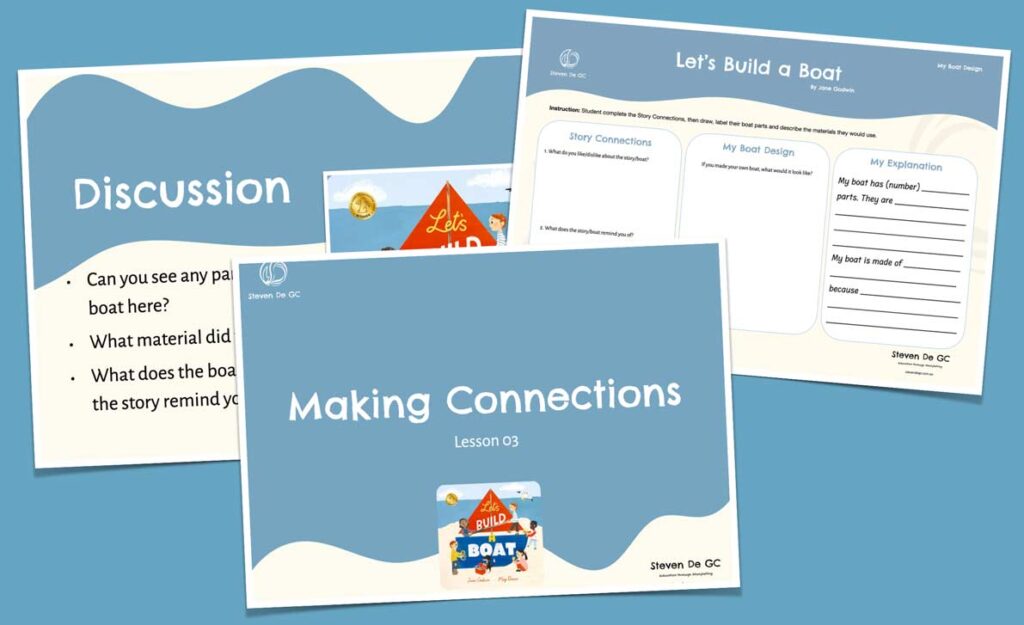
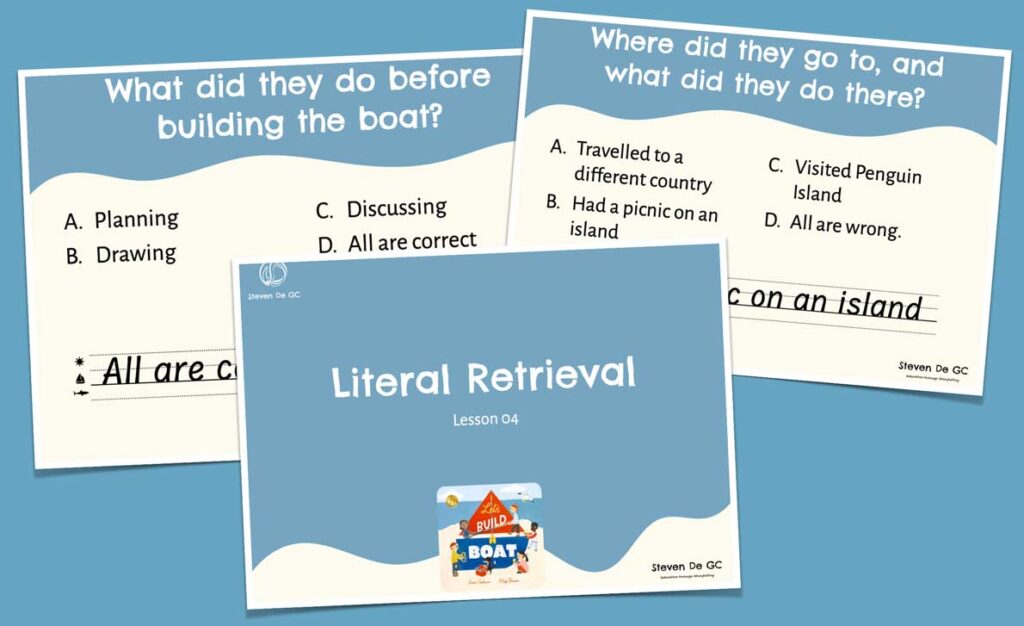

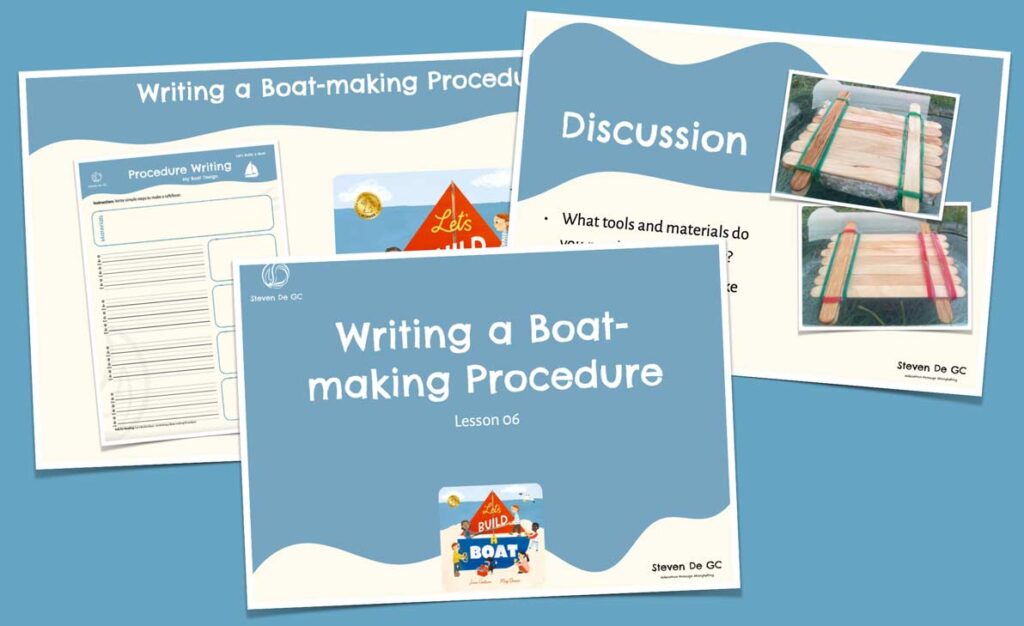
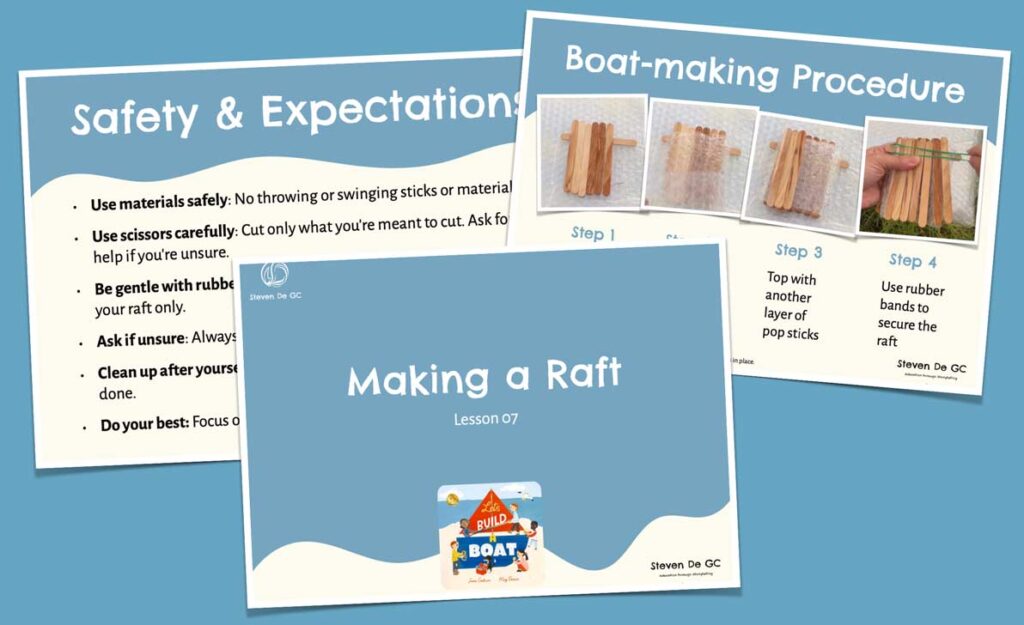
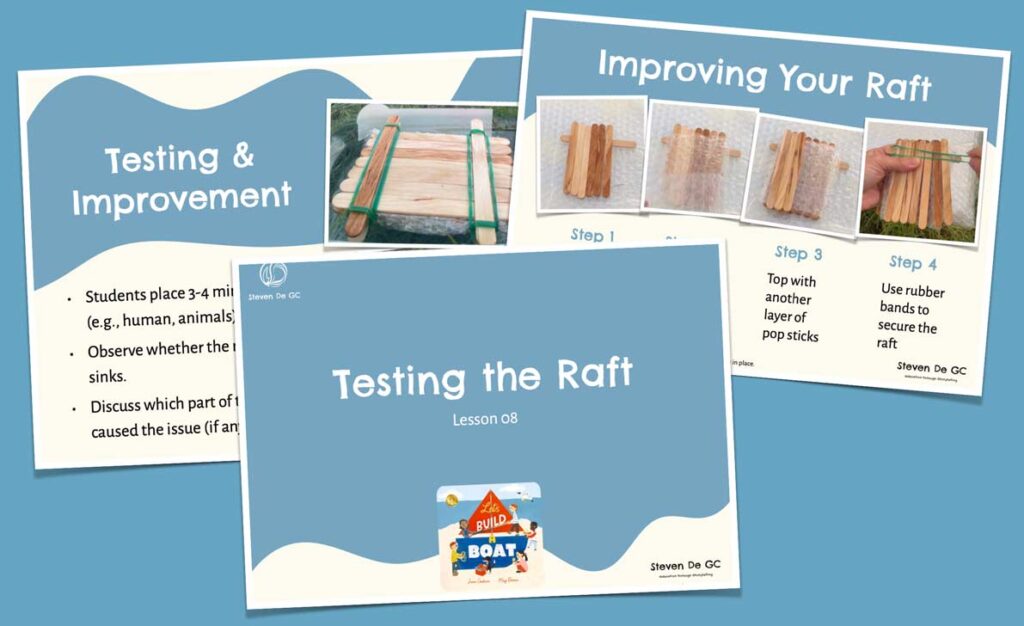
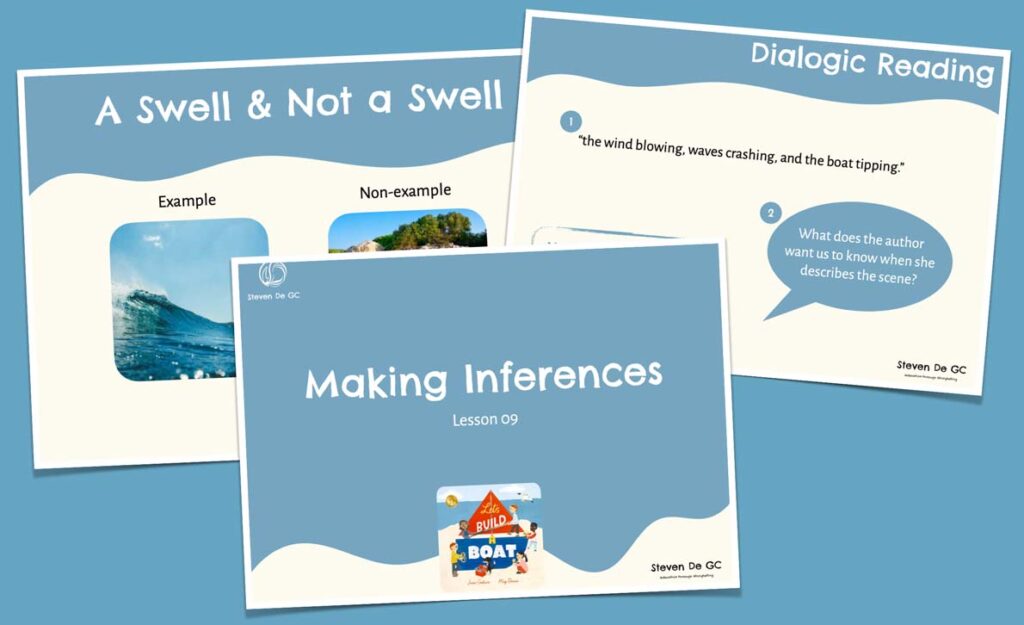
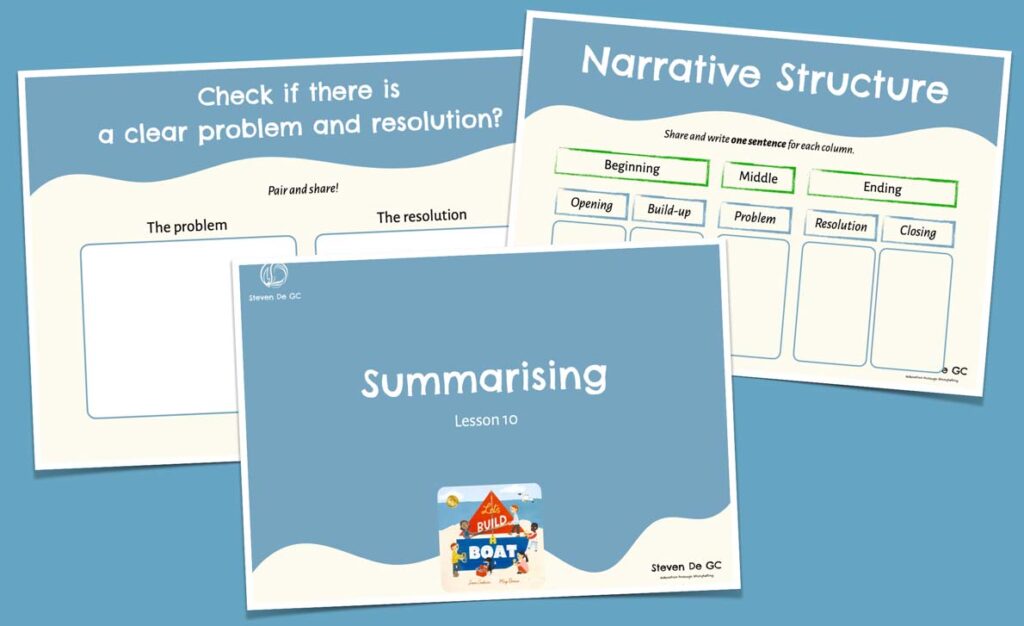
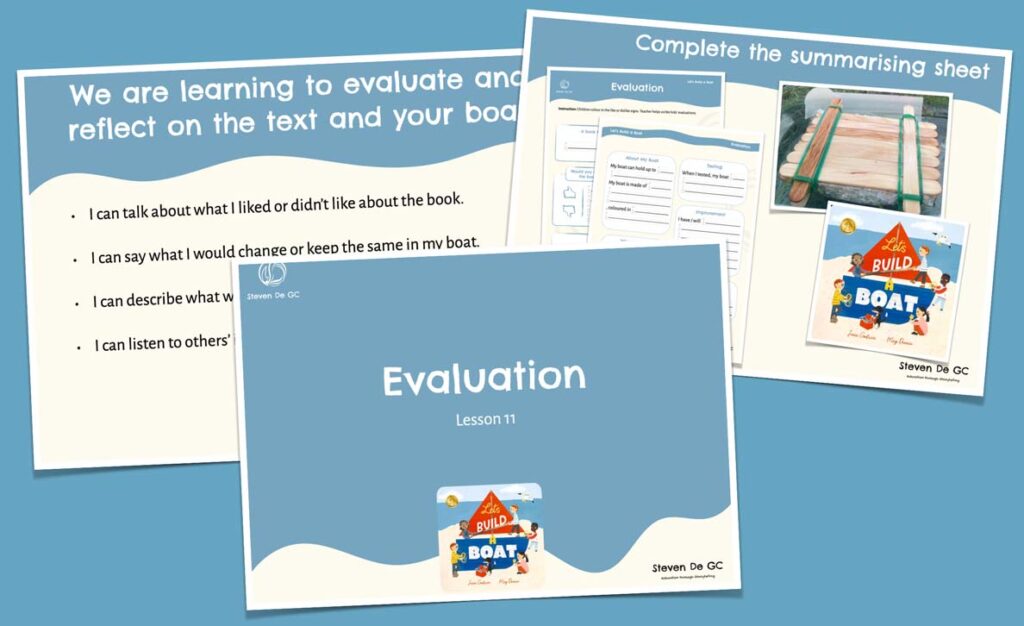
![[T4R] The Shouting Girl Reading/Health Unit for Year 2 [T4R] The Shouting Girl Reading/Health Unit for Year 2](https://stevendegc.com.au/wp-content/uploads/2025/07/T4R-TheShoutingGirl-UnitOverview-Cover-1024x627.jpg)
![[T4R] A Family is a Family is a Family Reading Unit for Foundation Year [T4R] A Family is a Family is a Family Reading Unit for Foundation Year](https://stevendegc.com.au/wp-content/uploads/2025/03/T4R-A-Family-is-a-Family-UnitOverview-1024x627.jpg)
![[T4R] Stay For Dinner Reading Unit for Year 2 [T4R] Stay For Dinner Reading Unit for Year 2](https://stevendegc.com.au/wp-content/uploads/2025/02/T4R-Stay-For-Dinner-UnitOverviewCover-1024x627.jpg)
Leave a Reply